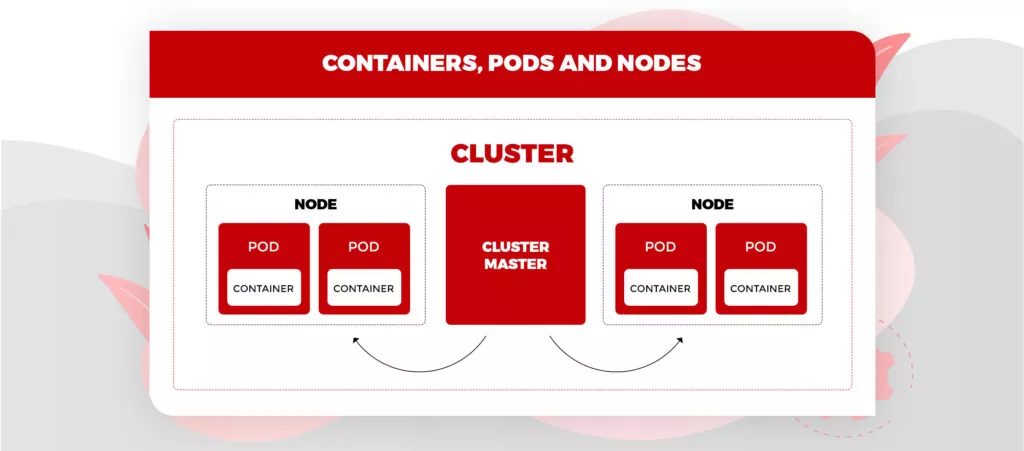
“Write once and run anywhere” with Containers. Do you think containers are the future of virtual computing? Organizations are choosing containers over VMs todrive higher server efficiencies, minimize server and licensing costs. Dear Readers, in this blog we would get to know more about containers, why Container Orchestration needed, how container technology has accelerated app development and much more.
Table of Contents
Toggle
Table of Contents
ToggleWhat is Containerization?
Containerization can be called an alternative or companion to virtualization. It is a software development process where software codes and all their dependencies are wrapped up together so that they can be executed uniformly on any infrastructure. Let’s understand the container technology better through an example. Containerization allows engineers to build and deploy applications quickly and securely. With traditional techniques, code is created in a particular computing environment, however, when moved to another environment, brings about bugs and errors. For instance, when a developer moves code from a desktop to a virtual machine (VM) or from a Linux to a Windows OS. Containerization eliminates this issue by wrapping the application code along with the dependent/related files, libraries, and conditions needed for it to run. This single bundle of programming or “container” is preoccupied away from the host OS, and henceforth, it remains isolated and becomes compact—ready to stumble into any platform or cloud. The reasons behind the popularity of containerization can be these trends in the IT industry:- Digital Transformation – Organizations are adopting digital platforms and approaches that empower them to persistently build, deliver and manage powerful new applications quicker than competitors in the market. Container technology is one such approaches that accelerates the software development.
- Multi-cloud – Because of their “contained” nature, containerized applications can rapidly and effectively be moved across on-premises, private cloud, public cloud, and hybrid cloud environments.
- Open-source – Containerization has been around for quite a while, but the public release of the Docker open-source container format in 2013 and the Kubernetes platform in 2014 has popularized it even more. Embrace digital transformation with containers and accelerate app development.
- DevOps – Containers are turning into the default application packaging format for DevOps groups, empowering DevOps engineers to share their code and dependent conditions effectively with the IT operation teams. Because containerized applications get decoupled from the host OS, engineers are able to better concentrate on creating applications utilizing their #1 tools, while IT operations can focus on deploying them. Container technology has really driven the build-test-deploy lifecycle in DevOps.
Four must - haves in Kubernetes Security Checklist
Why Container Orchestration?
Container orchestration is the automation of efforts needed to run the containerized workloads such as provisioning, deployment, networking, scaling up, scaling down and a wide range of things required to manage the container’s lifecycle. A containerized application may consist of thousands of containers and may become complex when handled manually. Container orchestration provides a declarative way of automating most of the procedures in the development lifecycle. Container technology makes the operational complexities manageable and is very helpful for the DevOps Team and culture. Moreover, it simplifies the operations, boost resilience and keep the app secure by reducing the human error.Benefits of Containerization
Containers can run anywhere provided container engine support the host OS. There are several reasons to adopt containers in your organization and embrace digital transformation with containers. Some of them are as follows –- Portability: A container is not tied to or dependent on the host operating system and therefore, is compact and ready to run consistently and reliably across any platform or cloud.
- Agility: The open-source Docker Engine for executing containers began the business standard for containers with basic developer tools and an encapsulation approach that supports both Linux and Windows OS. Developers can keep utilizing agile or DevOps methodologies for quick application development.
- Productivity: In the containerized environment, software shares the machine’s OS kernel, and application layers inside a container can be shared within several containers. As a result, it drives higher server efficiencies, minimizing server and authorizing expenses.
- Easy Management: A container orchestration platform automates the scaling, installing, and management of containerized workload. Kubernetes has come out as the most famous container orchestration system that automates the Linux container functions initially. Kubernetes works with numerous container engines, like Docker, yet it additionally works with any container that adjusts to the Open Container Initiative (OCI) norms.
- Speed: Containers are referred to as “lightweight,” which means they share the machine’s OS part but not the additional overhead. In addition to the fact that this drives higher server efficiencies, it likewise lessens server and authorizing costs while accelerating start times as there is no OS to boot. Get on to the journey of Digital Transformation with Container Technologies.
- Fault Isolation: Each containerized application can operate independently. Issues in one container don’t affect the activities of some other container. It allows developers identify and address issues within the container without hampering the performance of other containers. Moreover, the container engine can also use any OS security isolation methods, for example, SELinux access control—to seclude shortcomings present in the containers.
- Security: As you know that containerized applications are independent, they don’t get attacked by malicious code from other containers or the host framework. Furthermore, security authorizations can be defined to automatically impede undesirable parts from entering containers.
Overview of Pods
Pods are the smallest computing units that can be deployed. It is a set of one or more containers sharing the network resources and storage along with the specification for execution.
Container >> Pod >> Cluster
Pods are created by controllers which manage the activity of pods in a cluster. There are three types of controllers –
- Jobs for short-lived batch-type jobs and will run a task to completion
- Deployments for applications that are stateless and persistent, (HPPT servers)
- StatefulSets for applications that are both stateful and persistent (databases)

Image Source : Towardsdatascience
Containerization Vs Virtualization
Container technology and virtual machines are often compared to each other. However, containerization is becoming the preferred technology by IT professionals due to its amazing features. Virtualization allows engineers to run multiple OS and applications simultaneously by utilizing the resources from the same physical computer. Let’s understand through an example – an enterprise can run both Linux and Windows, along with several applications on a single server. Each application along with its dependencies, including a copy of the operating system (OS), are wrapped together as a VM. Running multiple VMs on the same physical machine, enterprises can achieve noticeable savings in operational and energy costs.

Image Source : Microsoft
Containerization uses resources more wisely. A container creates a single package consist of software along with its related configuration files and other dependencies required to run it. Unlike virtual machines, containers don’t wrap a copy of OS in the package. Instead, the container runtime engine is installed on the OS of the host system which enables all containers to share the same OS. Containers share the machine’s OS kernel instead of associating an OS within every application (as in VMs). In a container, the common bins and libraries are also shared among multiple containers, which reduce the capacity of the container than a VM.
Also Read – Green Cloud Computing Era -Why a Boon to Technology?
This was all about the Digital Transformation with Container Technologies. We hope you found the article useful and informative. Additionally, if you are looking for cloud professionals with hands-on experience on Kubernetes and other container orchestration tools, PeoplActive is a go to platform. Visit PeoplActive and let us know your requisition by tapping on Hire Talent.




